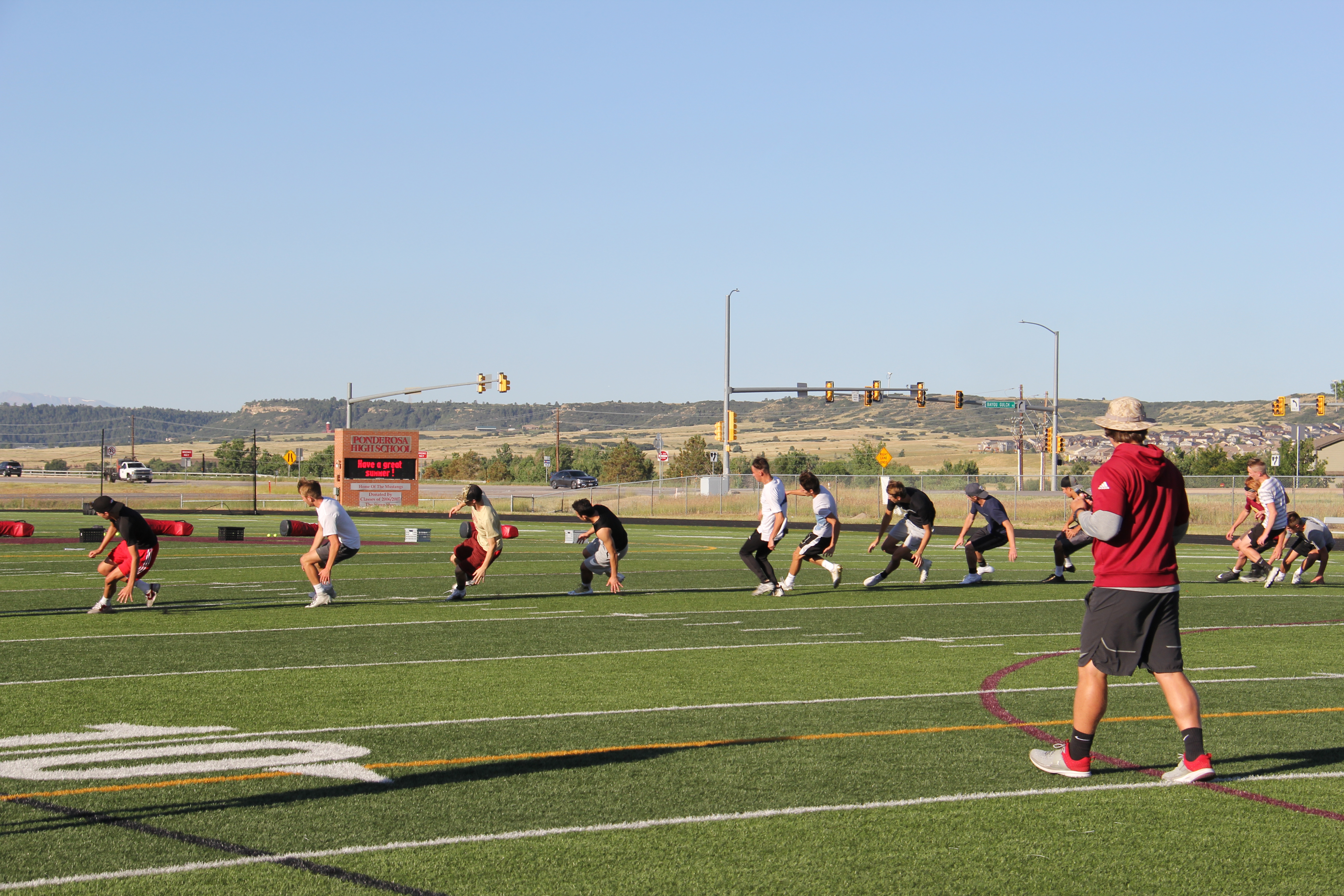Sprinting 101 for Strength and Conditioning Coaches with Derek Hansen – Part 2
Speed & Agility | Sports PerformanceABOUT THE AUTHOR

Derek Hansen
There are few more purely athletic pursuits than sprinting, and just about every field and court sport requires running at maximum effort and efficiency. And yet most athletes have major room for improvement in not only their expression of top-end speed, but also their biomechanics and locomotion. From a coach’s perspective, sprinting can seem a little daunting, and it’s all too easy to let a weight room mentality of always pursuing more creep onto the track, often to the detriment of programming and athletes alike.
Luckily help is at hand in the second part of this series in the form of sprinting expert Derek M. Hansen. After a strong lead-off leg, he now riffs on making sure you don’t overdo volume, the importance of arm action, and how to sequence sprinting, plyometrics, and lifting to yield maximal results without breaking your players down.
If a coach is going to have his or her athletes do plyometrics and lifting alongside sprinting, what sequence should these activities go in?
I’ve always considered sprinting to be a first order activity. That’s the same with anything that requires fine motor skills and coordination, too. When we have people sprint first and then go into the weight room, they often PR, or at least do very well in their lifting. Whereas the opposite wouldn’t be true. It’d be like having a baseball player do a lot of arm curls and then go out and try to throw their best fastball pitch. Sometimes athletes think they’ll be totally worn out by sprinting, but they usually find that while it’s challenging, they go into the gym afterwards and have a great session. I’d suggest the same order with plyometrics – do your sprinting first.

What technique cues do you give to athletes who’ve never had any formal sprint coaching?
There’s an ongoing debate over whether to emphasize vertical or horizontal force. I use more vertical cues and phrases that encourage an up-and-down action, not least because it’s more instinctive to think about forward-and-back motion. I never want sprinters to paw or reach. Charlie Francis used the analogy of tipping a bicycle over on its back. If you wanted the front wheel to turn as quickly as possible, you’d start by pulling it towards you. But once it gained momentum, you’d get it going faster by hitting the tire vertically on the side.
When we get athletes to think vertically, it’s easier to get their arms more involved. This might seem counterintuitive to concentrate on the upper body, but there’s a biological connection between the upper and lower body and arms and legs. If you can get them to open up the shoulders and generate more force with their arms, then the legs will follow.
When thinking about sprinting we obviously need to consider intensity because of the speed involved, but how important is volume?
If you put in sufficient reps twice a week without loading your athletes up with heavy sleds and other resistance tools, that’s often about right. One way to avoid doing too much is to change the training goal every day. Monday you might sprint, Tuesday do more conditioning, Wednesday do a heavy lifting session, Thursday have an off day, and Friday do some sprinting and some plyometrics, for example. On each day, you have a primary emphasis but, as Charlie Francis taught, you still consider everything else as well. If you try to do all things at maximum volume all the time, it simply will not work. You’ll exhaust your athletes’ nervous systems. You cannot be the best across the board simultaneously.
Another thing to avoid is eliminating one activity for too long when you’re focusing on something else. So maybe you’re focusing on building upper body power and feel like you need to cut out jumping. If you go too long, the next time a player has to jump, they’re going to be de-trained. Whereas if you’d still done a little jump work and had just cut back the volume, you could’ve kept them ready. By squeezing the volume you can preserve quality across all areas, while keeping your focus on the main priority. That way your athletes will maintain a relationship with all the qualities they need for their sport, and will be ready when they’re called upon to do any of them more. It’s like keeping in touch with your relatives – if you go a year without talking to them, they’ll be mad at you when you meet up at the next family reunion.

What are the warning signs that an athlete is doing too much?
Part of it’s visual – an experienced coach can see them tightening up. When you see an athlete break a world record, particularly on the track, it usually looks effortless and the commentators will often observe that. Versus when someone ties up toward the finish line. You can also get a bit more objective in your observations. This might be in competition. If a sprinter’s training seems to have been going well but they run three tenths of a second slower than expected at a meet, then you know something is wrong. The time is telling you that he or she is fatigued.
You can also extend this to practice by just using a simple stopwatch to time sprints. It doesn’t have to be for every rep, but if you see someone’s splits are declining, it’s time to stop or back off on the volume. That said, you shouldn’t rely too much on any single tool. I used to lug this big DSLR camera around to film my athletes, but I recently upgraded my phone. The camera on it is so much better than it used to be and I got the most storage possible. Now I can record in 120 frames per second and use the Dartfish Express app to change the angle, pull up split-screen footage, and notice changes between first and last reps. It’s as much of a lab collection device as a phone for me.
Good coaches can also tell when technique starts to break down in other ways. One time we had an intern who was legally blind, and they’d stand to the side of the track and listen. When a runner started slapping their feet, they knew.
If an athlete does fall short in competition or start lagging consistently during training, how do you rectify the situation?

The biggest thing is educating them on what’s happening, and going through the possible reasons why. They’re usually despondent about a bad result or poor time, and tend to self-blame. That’s not going to help, so you have to stop it and get them to change their perspective. Part of that is taking responsibility as the coach and saying, “This is my fault.” I sometimes give them a day or two off to super-compensate from their last training phase and get a mental break, but you don’t want to make it too long because, as I said earlier, otherwise their training can start to suffer. That said, it usually takes a long time to accumulate enough fatigue to impact performance significantly, so it’s not something you can fix right away. It’s going to take time to help dig them out of the hole, and you must make that clear. You’ve got to be patient with them, and they need to be patient with themselves.
I’ll often encourage the athlete to get a massage or get in the sauna – not just for the sake of the recovery these activities encourage, but also to distract them and keep them from over-training more. We also look at the sleep component and make sure that’s dialed in, as well as their nutrition. I frequently say in presentations that you need to be your own Swiss Army knife – coach, psychologist, nutritionist, etc.
Are you a better coach after reading this?
More coaches and athletes than ever are reading the TrainHeroic blog, and it’s our mission to support them with useful training & coaching content. If you found this article useful, please take a moment to share it on social media, engage with the author, and link to this article on your own blog or any forums you post on.
Be Your Best,
TrainHeroic Content Team
HEROIC SOCIAL
HEROIC SOCIAL
TRAINING LAB
Access the latest articles, reviews, and case studies from the top strength and conditioning minds in the TH Training Lab


